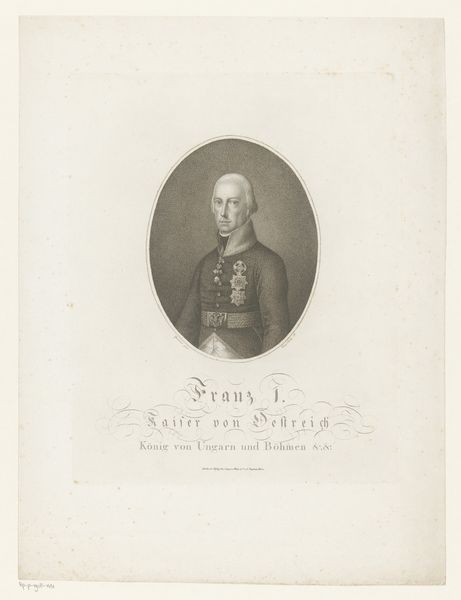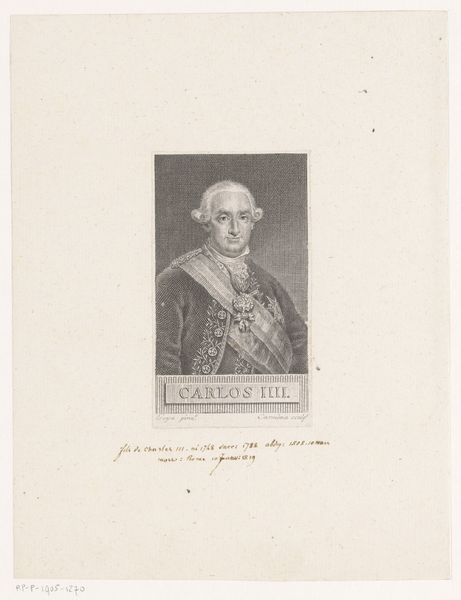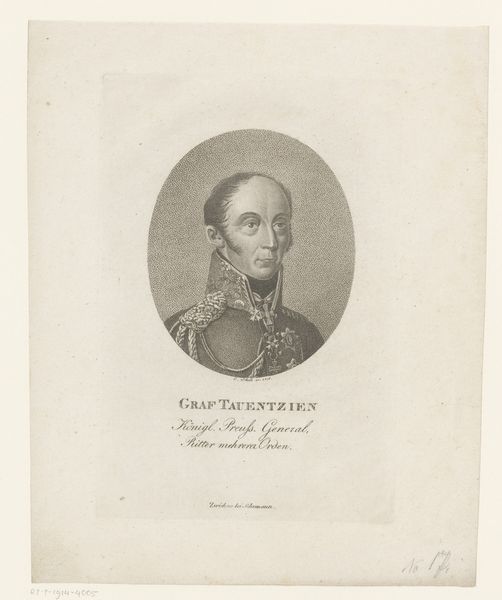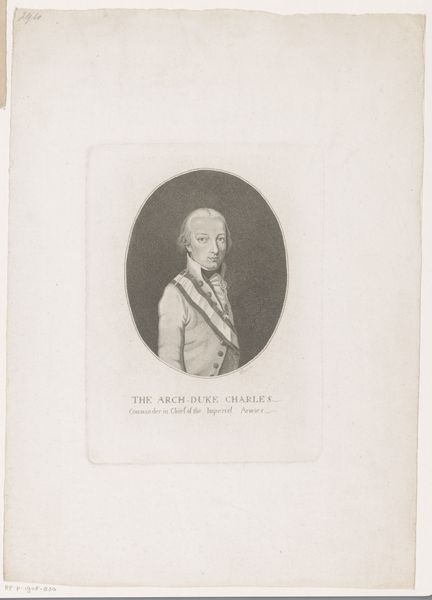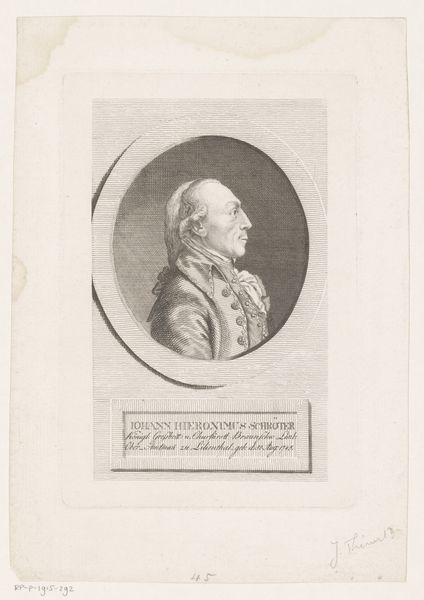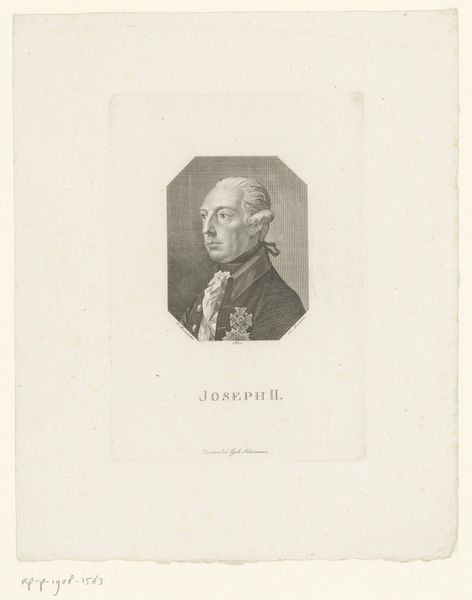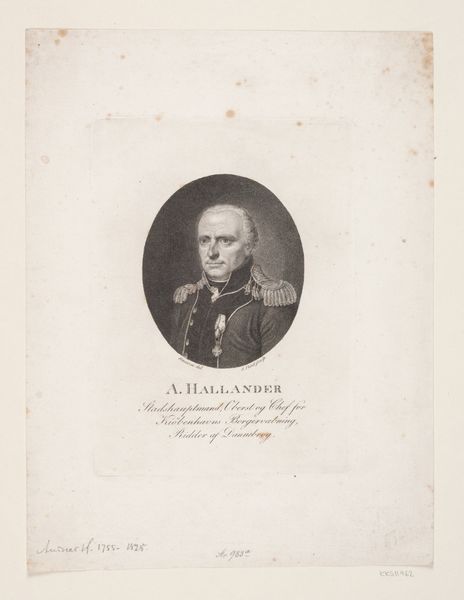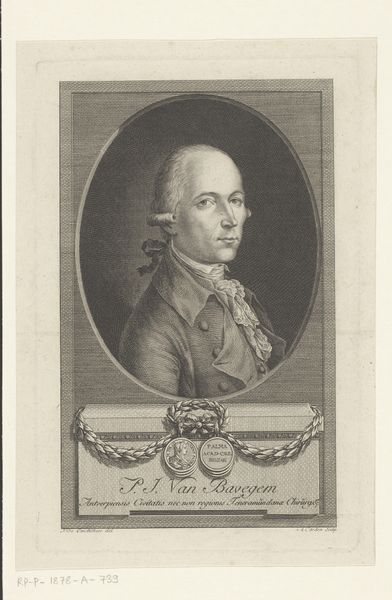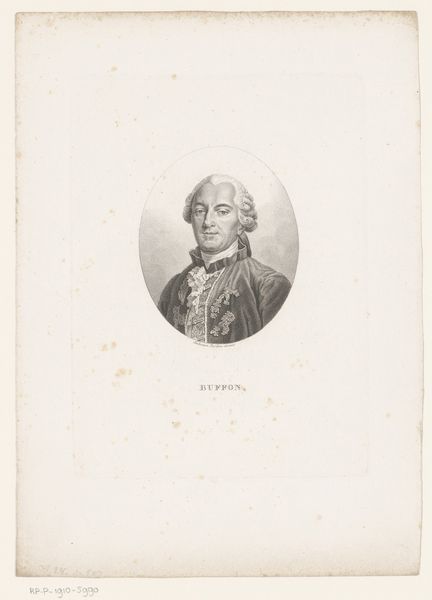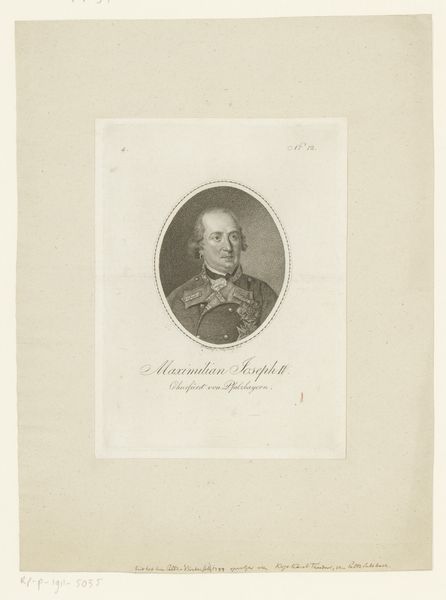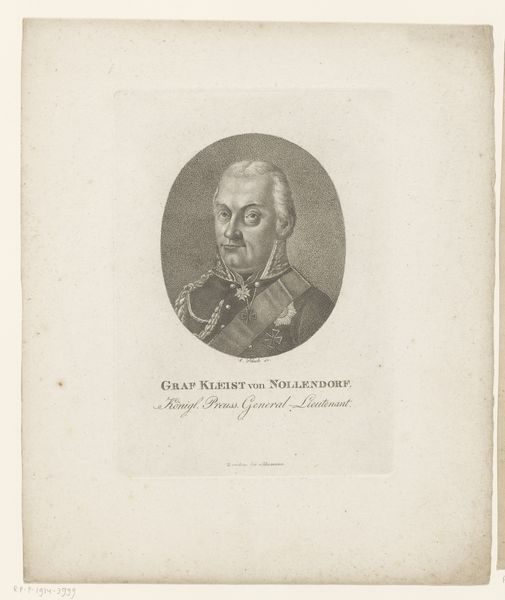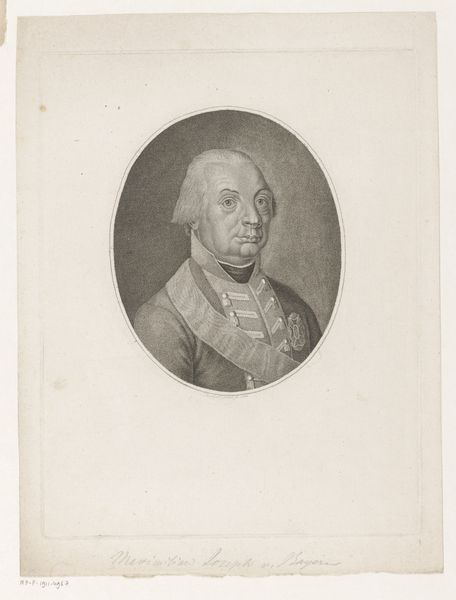
print, engraving
#
portrait
#
neoclacissism
# print
#
old engraving style
#
history-painting
#
engraving
Dimensions: height 202 mm, width 175 mm
Copyright: Rijks Museum: Open Domain
Heinrich Schmidt created this portrait of Franz II Josef Karel, the Holy Roman Emperor, using engraving techniques. This method involves cutting lines into a metal plate, applying ink, and then transferring the image onto paper under high pressure. The linear precision achievable through engraving lends itself well to capturing fine detail. Look closely, and you’ll see the texture of Franz's clothing, and the subtle gradations of tone that give his face volume. The process would have required careful labor, and a practiced hand. Engraving was not just a means of artistic expression, but a vital tool for disseminating information and imagery during this period. It allowed for the mass production of prints, making portraits like this accessible to a wider audience than painted portraits. By understanding the materials, and processes involved, we appreciate the social context of the artwork. We begin to move beyond the traditional art history, and see it as a product of labor, technology, and its intended audience.
Comments
No comments
Be the first to comment and join the conversation on the ultimate creative platform.
